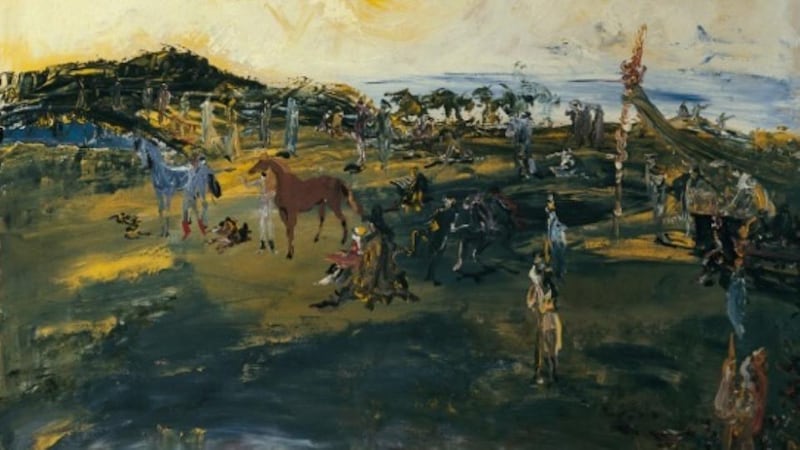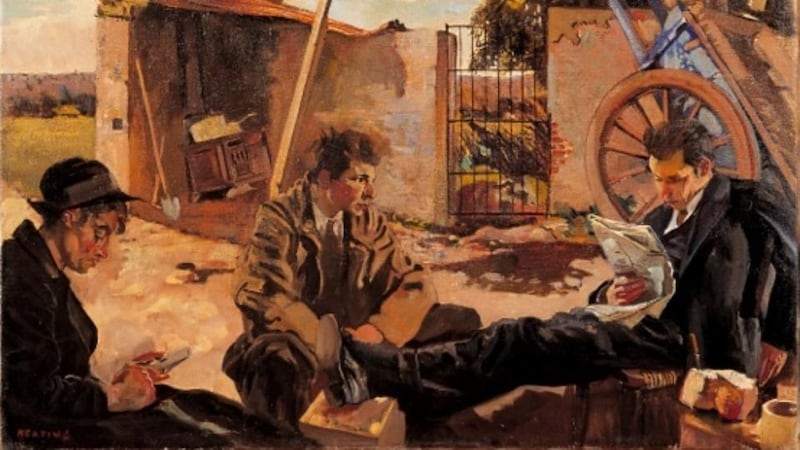In a real sense, the AIB Art Collection fell victim to the implosion of the Irish banking system. In a rush to judgment in the heated atmosphere of the time, the collection was disparaged as a corporate bauble, and/or an ill-gotten hoard that should be given to the public. Both views missed important points and flew in the face of the facts.
First, the nature of the collection. It was, and remains, one of the very few informed, systematic attempts to build a representative collection of 20th-century Irish art on the part of any institution, public or private, and one that succeeded admirably.
It succeeded because, very early on following the bank's decision to acquire work for its new Ballsbridge HQ when it was being built at the end of the 1970s (with the encouragement of architect Andy Devane), Dr Frances Ruane was brought on board as arts adviser. The bank's art committee was receptive to the idea of concentrating on Irish art of the 20th century, and Ruane saw the potential for ambitiously focusing and shaping the collection well beyond its original outline.


She further realised that more recent Irish art, from the 1950s on, was relatively affordable and under-represented in national collections – a situation that still pertains and that the public institutions are still struggling to rectify.
AIB’s policy of buying recent work also meant that living artists and their galleries benefited, rather than simply the secondary market. This effect was enhanced with the advent of the AIB Art Prize, a substantial annual award that ran through the first decade of the century.
Strategic logic
For a corporate collection, AIB's enjoyed quite a high level of public visibility. As early as 1986, selected works were exhibited in the Douglas Hyde Gallery, and there have been many shows since. Besides which, works were distributed through bank branches and offices. No collection is perfect, but there was a strategic logic to this one, together with a consistent core of support within the bank, that made it exceptional.
When AIB was effectively nationalised at the end of 2010, 39 works from the collection were handed over to the State. They were, predictably, choice pieces, including works by Jack B Yeats, Paul Henry, Roderic O'Conor, Seán Keating, Mainie Jellett, Patrick Collins, Tony O'Malley and Sir John Lavery.
Their eventual destination was the Crawford Art Gallery in Cork, where they reside now. AIB still holds, looks after and exhibits several thousand artworks, a large proportion of exceptional quality.
There has been a renewed emphasis on public accessibility, and various strands and parts of the collection have been shown widely at venues throughout the country. Several further exhibitions are currently at the planning stage, and one of them marks a significant departure. That's Art of a Nation, consisting of more than 70 prime pieces from the collection (including 25 from the Crawford) which will go on show at the Mall Galleries in London in May. It was formally announced yesterday by Ambassador Dan Mulhall at the Irish Embassy in London – not that far, as it happens, from the galleries.
Providing a platform
What's significant about Art of a Nation is that, as the title suggests, it's an effort to provide a platform for Irish art and artists in London, and to give a good outline account of Irish art from the late 19th century to the present day in a visitor-friendly form. That it can be done on the basis of one corporate collection is in large measure a testament to Ruane's 30 years-plus role as adviser.
It was former AIB chairman David Hodgkinson who proposed showing works from the collection in London, and he suggested the Mall Galleries as a potential venue. Propitiously located in terms of footfall, the Mall Galleries, run by a federation of eight art societies, champion contemporary figurative work. Hodgkinson had in mind the historical links of several of those societies with Irish artists, from Roderic O'Conor to Letitia Hamilton.
In the event, the Mall's director, Lewis McNaught, and curators Anthony Lester and Nicholas Usherwood, realised the scope and nature of the bank's collection when they had a chance to explore it in detail. It's one thing to put together a few highlights out of context, but McNaught and his team have tried, as he puts it, to tell a story.
While there are artists, past and present, whose works are known and exhibited in London – Jack B Yeats, Louis le Brocquy, Sean Scully, Dorothy Cross, Hughie O'Donoghue, Mark Francis and Alice Maher, for example – they are likely to be in the minority. As Ruane sees it, it's especially valuable that the work of such higher profile figures will be seen in its immediate context, historically and communally.
She points to a succession of exhibitions in the past that sought to "pin down what constitutes the 'Irishness' of Irish art". In a way, Art of a Nation turns this process around. There's no thesis, rather an attempt to broach what is there and see what we, and a wider, international public, make of it.
Art of a Nation: Works from the AIB and Crawford Art Gallery Collections is at the Mall Galleries, St James's, London SW1, open daily 10am-5pm, from May 13-31









